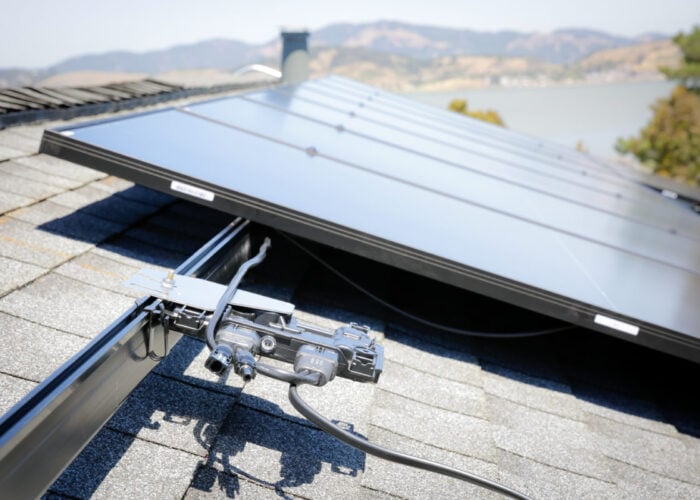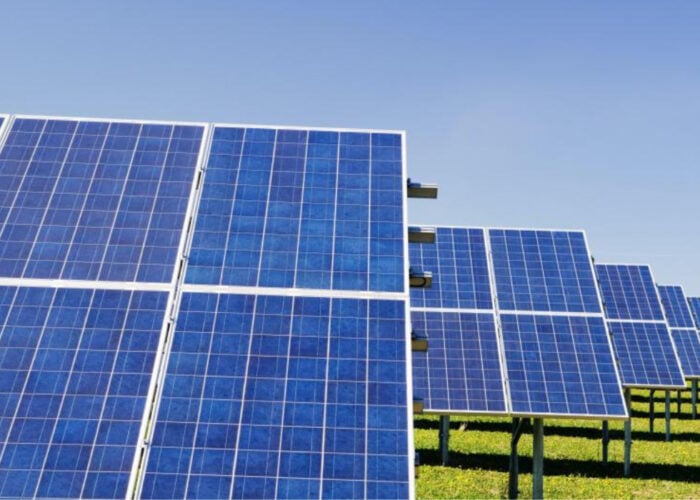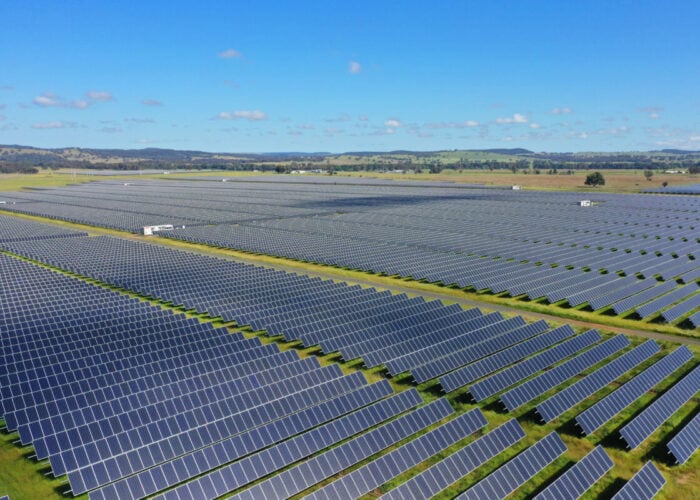
Two Kentucky electricity utilities will stall any solar PV capacity additions until 2035 unless solar prices “become more economically competitive”, despite an “influx” of demand from data centres.
In their latest Integrated Resource Plan (IRP), Louisville Gas and Electric (LG&E) and Kentucky Utilities (KU) forecast that system load on the Kentucky grid will increase by between 30% and 45% by 2032, mostly fuelled by greater demand from data centres and economic developments in the state.
Unlock unlimited access for 12 whole months of distinctive global analysis
Photovoltaics International is now included.
- Regular insight and analysis of the industry’s biggest developments
- In-depth interviews with the industry’s leading figures
- Unlimited digital access to the PV Tech Power journal catalogue
- Unlimited digital access to the Photovoltaics International journal catalogue
- Access to more than 1,000 technical papers
- Discounts on Solar Media’s portfolio of events, in-person and virtual
Or continue reading this article for free
The utilities – both subsidiaries of energy firm PPL Corporation – said that this load growth is expected “despite significant amounts of energy efficiency, customer-installed solar, and other energy-saving activities that are forecasted to reduce load by over 3.5% by 2032”.
The IRP puts forward plans to add two new natural gas combined-cycle generation units in 2030 and 2031, 400MW of battery energy storage in 2028 and another 500MW – alongside 500MW of solar PV capacity – in 2035.
In addition to this plan, the IRP presents an “enhanced solar plan” that would install 200MW of solar capacity in 2028, followed by another 200MW in 2030 and 600MW in 2032. LG&E and KU included this plan because “the growth of data centre load is driven by customers with aggressive carbon goals” but said that they will only use it “if requested by customers or solar prices become more economically competitive with other generation”.
“The idea behind the IRP is to pick a point in time and forecast the best path forward based on the current information that can be modelled,” said David Sinclair, vice president–energy supply and analysis at LG&E.
“We know there likely will be market and regulatory changes that could impact our actual plans, but we are confident that, given what we know today, the IRP modelling and our recommendation provide us with a solid direction forward.”
The IRP also forecasts the retirement of units 3 and 4 of the Mill Creek coal generation plant and unit 3 of the E.W. Brown coal plant in 2035. Last year, LG&E and KU received regulatory approval to replace 600MW of coal generation capacity at Mill Creek with 1GW of solar PV by 2027.
Replacing coal
Kentucky has historically been dominated by coal-fired power and moves by utilities to replace it with renewable energy generation have been well received.
Following the plans to replace coal capacity at Mill Creek, energy advocates applauded LG&E and KU’s proposals. The Kentucky Solar Energy Society called the move a “major victory for clean energy in Kentucky” after the Kentucky Public Services Commission (KPSC) approved the renewables capacity buildout on the basis of the “significant savings” it offers consumers.
However, decoupling Kentucky from fossil fuel generation is not proving that simple. In March 2023 the Kentucky General Assembly passed Senate Bill 4, which prohibits the KPSC from approving proposals to retire fossil fuel plants “unless the utility demonstrates that the retirement will not have a negative impact on the reliability or the resilience of the electric grid or the affordability of the customer’s electric utility rate”.
At the time of the Mill Creek ruling above, a representative of the Mountain Association, a nonprofit community financial institution in Kentucky, said LG&E and KU “wanted” to retire all four Mill Creek coal plants “because they are too costly to operate”.
As shown by the recent IRP and the KPSC’s approval of new natural gas capacity and the deferred retirement of two coal plants last year, the state’s electricity grid is likely to remain reliant on fossil fuel generation for the foreseeable future, despite the high demand for renewable energy among data centre operators.
In a report earlier this month, the Lawrence Berkeley National Laboratory found that “energy communities” – areas that have historically been built around fossil fuels and have been earmarked for renewable energy subsidies by the Inflation Reduction Act (IRA) – are yet to feel the benefits of the wider US energy transition. Many areas of Kentucky would be classed as energy communities.
Berkeley Lab said that tax credits in energy communities were “yet to take effect” and that the share of solar projects over 5MW built in energy communities had fallen since 2022.
Redeux sells solar-plus-storage site near Kentucky coal plant
Outside of the utility sector, solar and energy storage developer Redeux Energy Partners sold a 200MW/160MWh solar-plus-storage project in western Kentucky to Colorado-based developer Scout Clean Energy.
The project will connect to the Midcontinent Independent System Operator (MISO) transmission switchyard adjacent to the 400MW DB Wilson coal-fired power plant in Ohio County, Kentucky.
Michael Rucker, CEO and founder at Scout said: “Redeux Energy has thoughtfully developed this site to date, and we are looking forward to transforming this great foundation into a high-performing solar and battery storage project that will bring significant benefits to Ohio County.”







